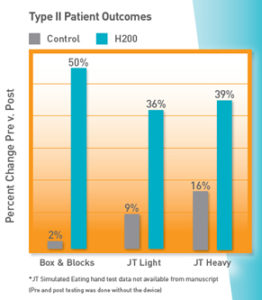Research Studies
Highlights of the clinical evidence about the H200 Wireless Hand Rehabilitation System:
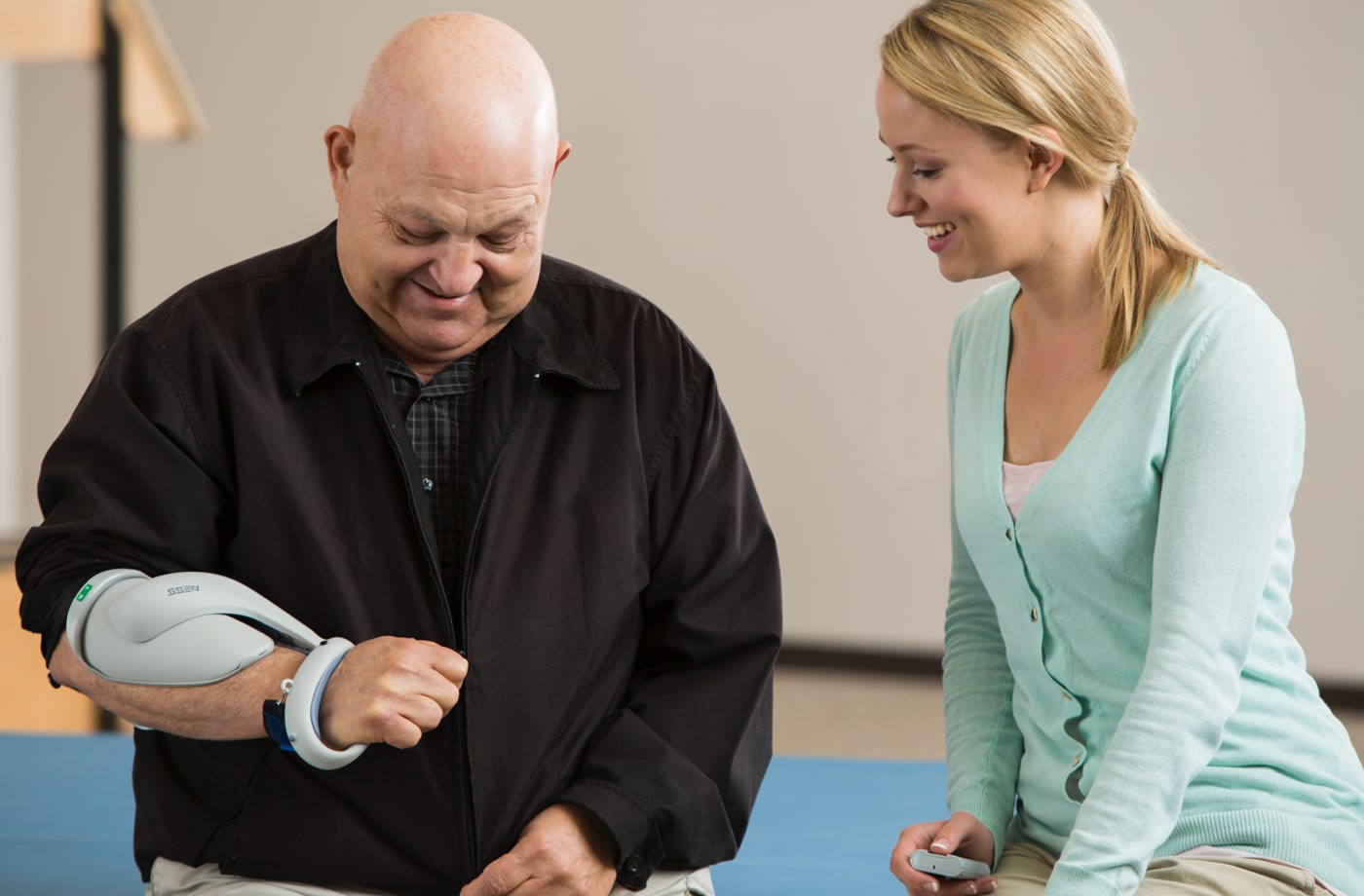
Use of the H200 Wireless benefits patients 0-3 months post injury
Alon showed that a 12-week task-specific training protocol incorporating FES resulted in better functional recovery of the upper extremity in stroke survivors with little to no hand movement than task-specific training alone.10 (n=15)
- Subjects practiced one hour per day, 5 days/week as inpatients and after discharge continued with one hour per day, 5 days/week at home, unsupervised
- All patients demonstrated improvement in hand function at 12 weeks with significant differences between the control (non-H200 Wireless) and H200 Wireless groups (p=0.049)
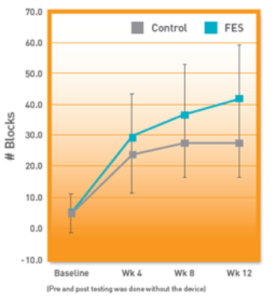
Longer repetitive practice produces significant benefits
Alon showed that a 12-week task-specific training protocol incorporating FES resulted in better functional recovery of the upper extremity in stroke survivors with little to no hand movement than task-specific training alone.10 (n=15)
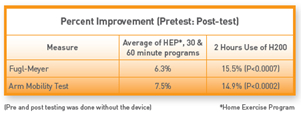
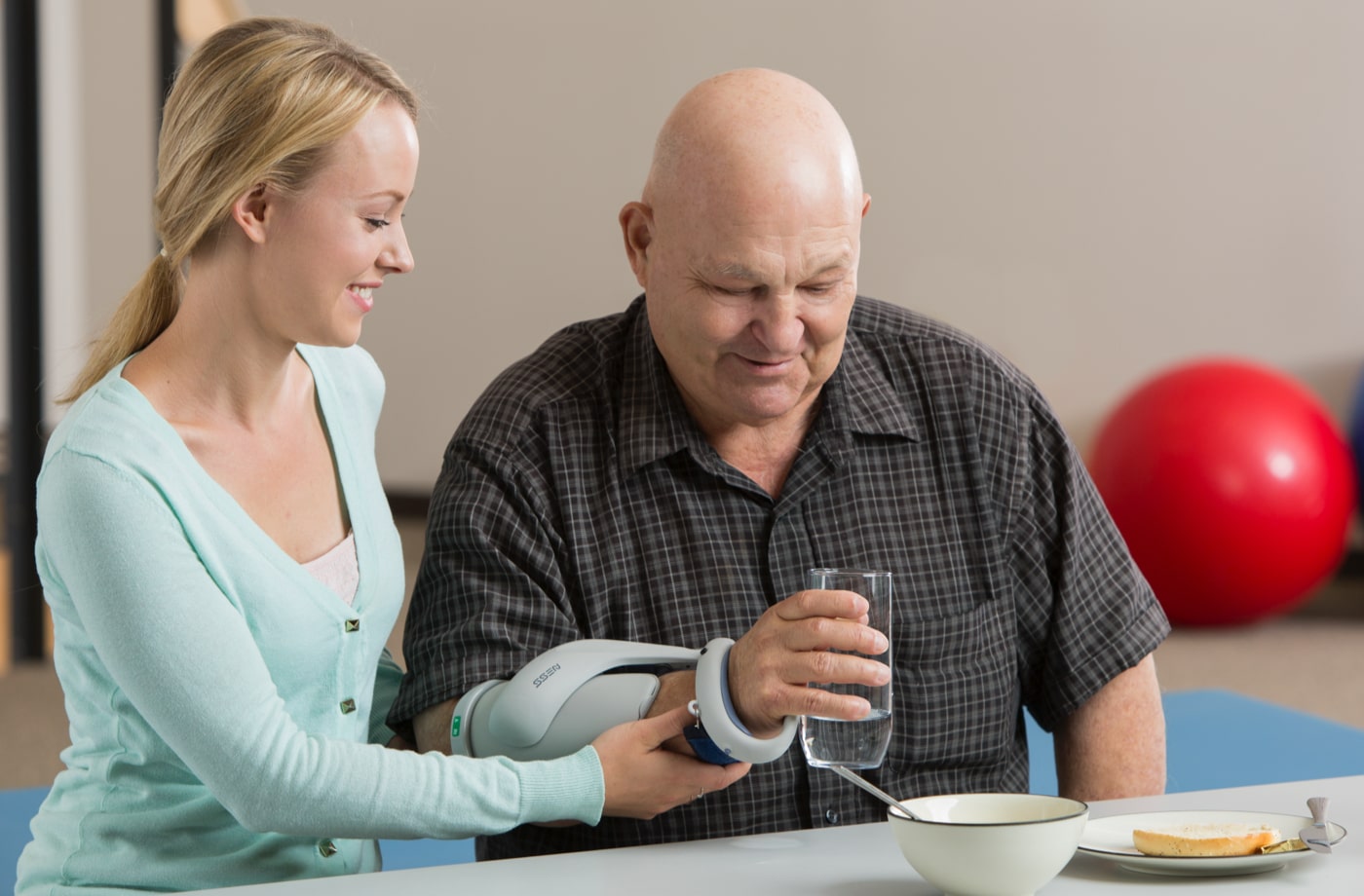
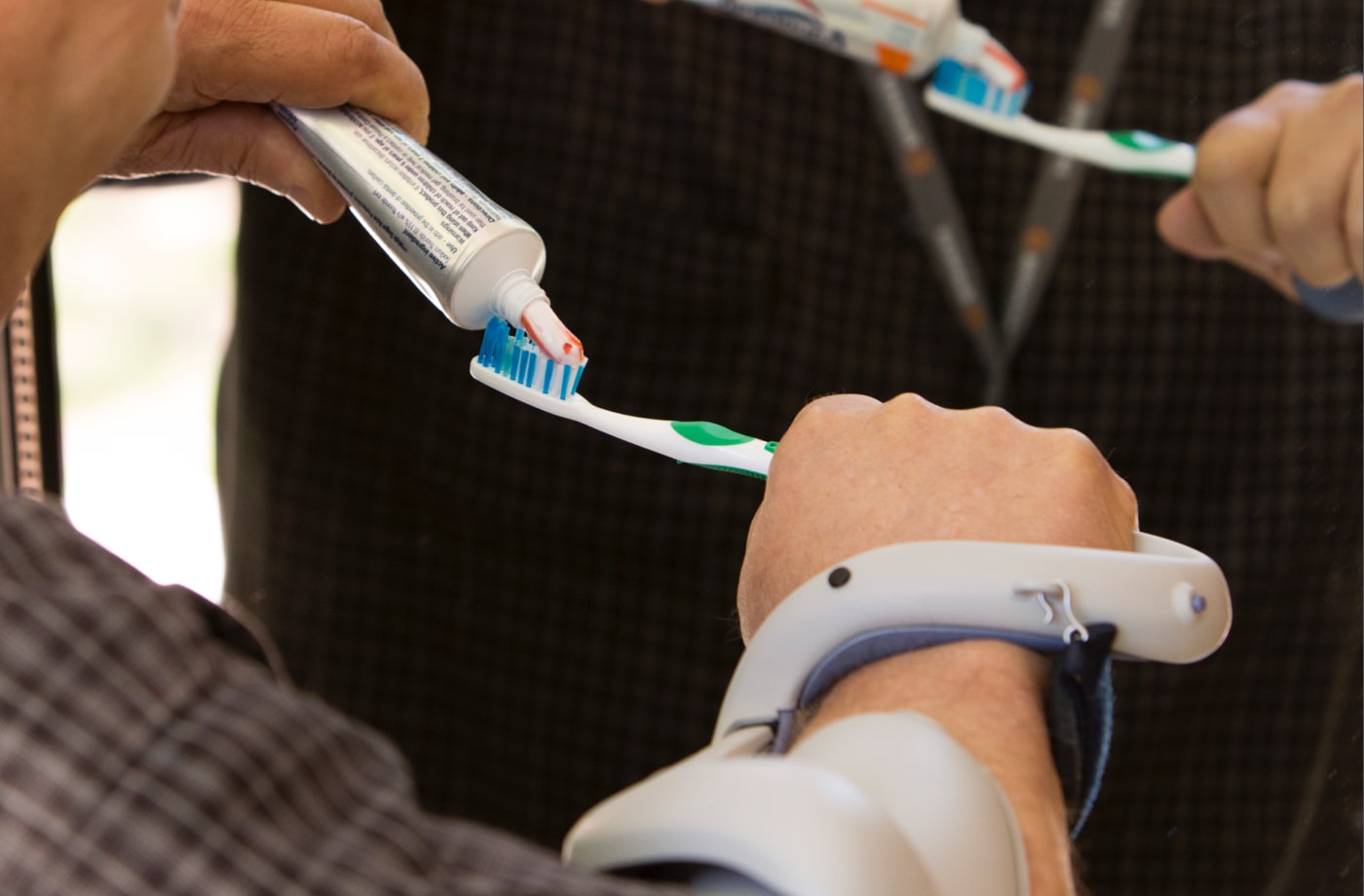
Patients 3-6 months post injury see compelling benefits with home use
A subacute study by Ring assessed daily use of the H200 Wireless and showed significantly improved outcomes vs. a control group.3 (n=22)
- A six week home based program resulted in significant reduction in spasticity throughout the upper extremity and active range of motion in the shoulder and wrist. (p<0.05)
- In individuals with partial active motion of the hand, greater functional recovery of the upper extremity was demonstrated by statistically significant differences in 4* functional hand tests
Type I: Patients with no active voluntary motion at the fingers and wrist. (n=10)
Type II: Patients with partial active voluntary range of motion. (n=12)
